Oh lord he we go, girls as the personification of wartime machinery. Memories of Strike Witches’ different fighter planes come rushing back as the quiet, long-haired Iona - the “mental model” of a submarine - is first introduced. Despite its name, Arpeggio of Blue Steel isn’t a follow up to Kathryn Bigelow’s film about a rookie New York cop or John Waynes 1934 western but a fully CG animated series about an alien fighting-force, the Fog, subjugating humanity in the guise of naval vessels.
That “fully CG” aspect of the series is front and centre as unlike recent attempts at blending traditional and computer-aided 3D animation such as the Berserk movies or some recent mecha musume productions (Busou Shinki, Infinite Stratos et. al.), there is not a scrap of hand-drawn animation in the thirteen episode run. This isn’t the CG of Vexille or Appleseed though but a genuine and concerted attempt to emulate hand-drawn animation with 3D models. And for the most part, it kind of works. The first few episodes venture into the uncanny valley - odd when the subject of emulation is far from human - however whether due to prolonged exposure or a proliferation of characters beyond the loli submarine with a thousand-yard stare, the later episodes lack the creeping unease of the earlier ones.
Back to the issue at hand though and the “girls as ships” hook for the series. Ignoring the obvious “I AM IN YOU” jokes that spring to mind and the odd propensity for parading around in their underwear given their holographic nature, they are handled with a degree of care and, perhaps most importantly, contextualised within the world. To be clear, this isn’t Girls Und Panzer’s “girls using weapons” or Upotte’s weird “girls = weapons” but somewhere in between; so they aren’t strictly anthropomorphisations (quirks and all) of their metal bodies, but nor are they simply riding around on them.
Rather confusingly though they do ride around on… themselves. Like glorified figureheads they gesticulate and chatter as battles rage, encircled by a bright neon UI that is also emblazoned upon their vessel. Indeed, CG is used to full effect with a pleasingly diverse range of shot compositions as well as a rather strange fetish for hexagons in the numerous UIs. No more is this apparent than during the various skirmishes that, for a naval layman at least, are tense and strategic rather than simply launching as many torpedoes as possible.
All of that is academic though when the meat of the show is the mental-model’s metaphysical crisis about who they are and why they have all but annihilated mankind. It could easily have been a trite and forced theme but against impressive odds, the series pulls it off. Helped along by a sterling soundtrack and a wonderful insert song akin to Tasogare Otome x Amnesia’s wonderful Requiem, there is genuine heart and emotion to a great many of the scenes; and despite Iona cleaving closely to the Rei Ayanami school of emoting, her tearful pleas for her once comrades to cease fighting is strangely earnest and affecting.
It’s at the expense of other development though such as why the alien Fog are on earth and prowling the oceans like luminous metal sharks, why Iona defected to aid humanity or any kind of character progression for the much revered male lead, Gunzou Chihaya. He is given a perfunctory back-story, enough to smooth his transition from bored looking high-schooler to the leader of a human-alien hybrid A-Team, but fundamentally he and his crew are left as ciphers. This includes the engine technician who sits alone, surrounded by glowing fusion reactors, while the bridge becomes increasingly crowded with mental models and jostling neon rings.
If all of this sounds a bit po-faced then it’s enough to know that there are moments of levity scattered throughout. Mostly sticking to well trodden love triangle drama, there are some inspired moments though such as resurrecting a mental-model into a teddy bear or the absurdity of a cluster of holograms sunbathing and enjoying a barbecue.
Fundamentally though Arpeggio of Blue Steel is as absorbing as it is charming and it doesn’t take long for the off-putting glassy eyed stare of the characters to ebb into just another quirk. There’s the odd sour note such as the extended section with the precocious child, telling insofar that it doesn’t involve Iona and her crew, but the lasting mark of the show is that the lack of back-story or world building is all but forgotten next to the solid and thematically consistent exploration of self-professed weapons coming to terms with emotions. Primarily through the medium of tea drinking but the point still stands.


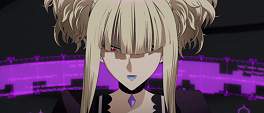
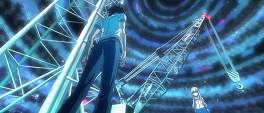
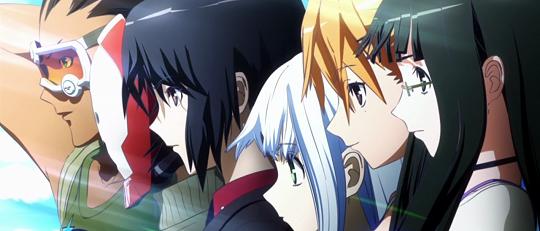
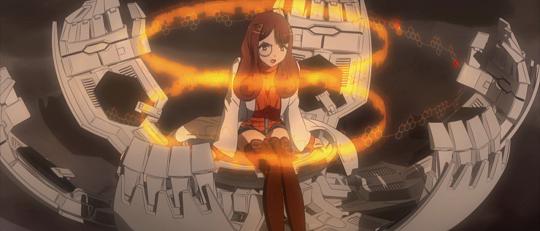
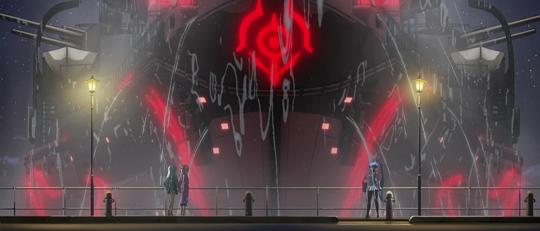
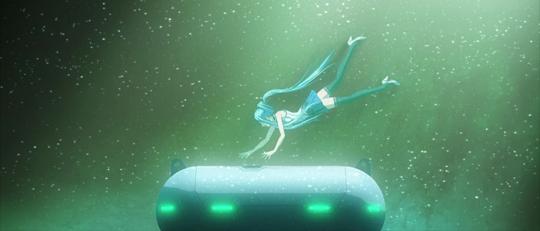
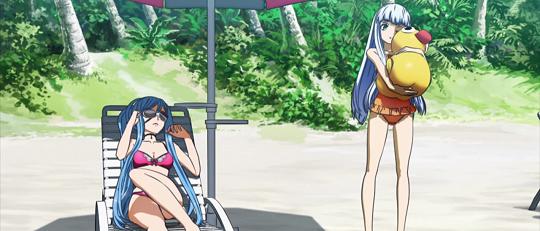
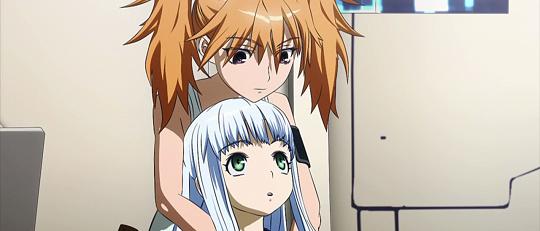
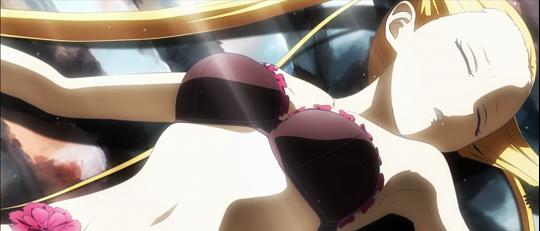

Also, I suspect there are still a good amount of hand-draw properties in the show, most notably a lot of the backgrounds are still drawn by hand. There might be some objects that are not animated by computer too.